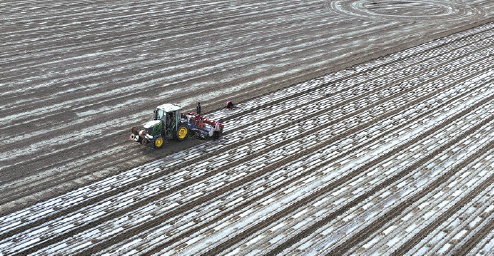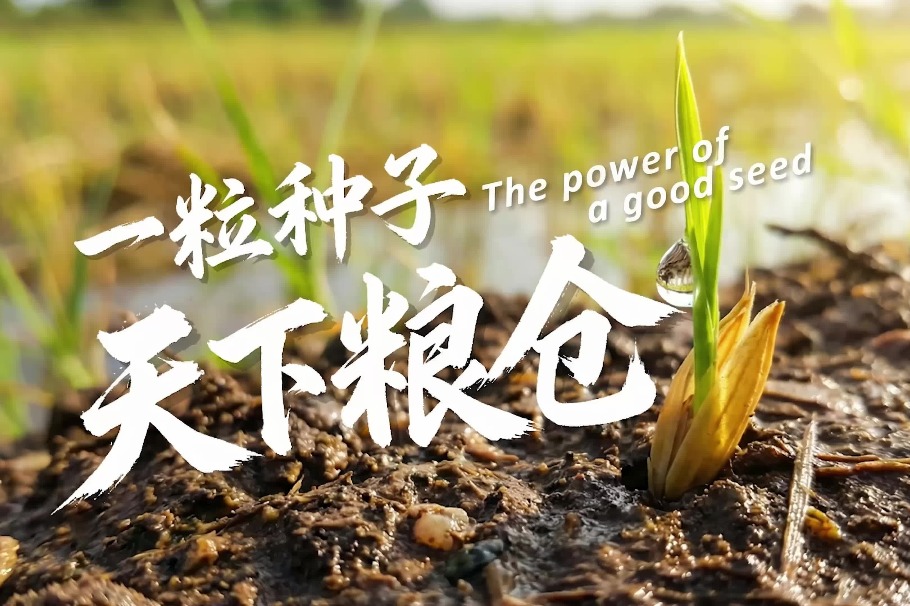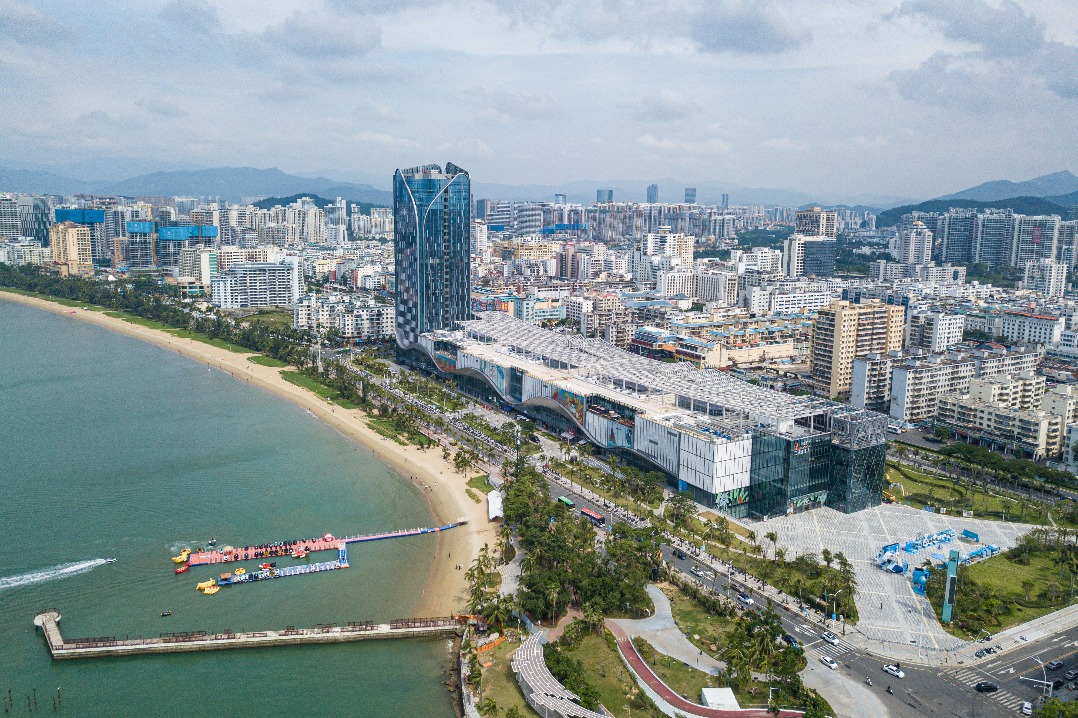Bumper cotton harvest expected in Xinjiang
With mechanical planting, farmers dismiss claims of 'forced labor'

The planting season for growing cotton in the Xinjiang Uygur autonomous region, China's primary cotton-producing hub, is expected to conclude this week.
Farmers say they are undeterred by Western sanctions imposed over alleged "forced labor" practices, insisting that Xinjiang's high-quality cotton is irreplaceable in the global market and remains a reliable source of income.
Xinjiang's cotton-growing area is projected to slightly increase from the 2.45 million hectares recorded last year, according to the regional government, reflecting the strong commitment of local farmers to the crop.
With temperatures rising, cotton sowing in Awat county of Aksu prefecture — renowned as the homeland of long-staple cotton — kicked off earlier this month across 93,333 hectares. All sowing operations are expected to be completed by the end of April, said Wang Tongren, director of the Agricultural Technology Promotion Center at the county's Bureau of Agriculture and Rural Affairs.
"We are looking forward to another bumper cotton harvest this year," Wang said. "We will ensure Xinjiang's cotton production remains strong by securing the size of the planting area, especially when it's being targeted by the United States."
On a 26.67-hectare cotton field owned by farmer Li Fugang, autonomous seeders equipped with the BeiDou satellite navigation system carried out sowing, laid drip irrigation tape and covered the fields with mulch film according to preset programs.
"All cotton planting can be completed within four days now, as the process is fully mechanized," said Li, standing in the middle of vast cotton fields in his village in Awat, where most villagers depend on the crop for their livelihoods.
"Look around, you barely see people in the fields during cultivation anymore. So where do the claims of 'forced labor' come from?"
Li, 50, said that mechanized farming has significantly reduced production costs, from 2 yuan per kilogram to just 0.3 yuan.
Xinjiang leads the nation in mechanized cotton farming, with a mechanization rate of 100 percent for planting and about 90 percent for harvesting, according to the regional government.
Sanctions have not dampened farmers' enthusiasm for cotton, which remains more profitable than grain cultivation, Li said.
Since 2014, China has implemented a cotton target price subsidy policy in Xinjiang, which helps ensure stable incomes even when cotton prices fluctuate. With greater mechanization and the adoption of smart agricultural technologies, cotton yields have steadily increased in recent years, allowing farmers to earn more, Li said.
"When I started planting cotton in 2012, the yield was only about 300 kilograms per mu (0.067 hectare).Last year, it reached around 450 to 500 kilograms per mu," Li said. "But for us, quality matters more. Since last year, we've been getting extra incentives for producing premium cotton."
"Xinjiang cotton is among the best in the world, everybody knows that," he added. "It's irreplaceable in the global market, and that's why we remain confident in the region's cotton industry."
Xinjiang maintained its status as the country's cotton powerhouse in 2024, producing over 5.68 million metric tons, accounting for 92.2 percent of China's total output.
The region's cotton and textile industries generated an output value of 220 billion yuan ($30.28 billion) and provided jobs for more than 1 million people last year, according to the regional government.

Today's Top News
- China urges Japan to stop challenging intl bottom line with its nuclear ambitions
- US arms sales to Taiwan a dangerous gambit: Editorial flash
- Taiwan opposition lawmakers announce plan to impeach Lai Ching-te
- Boosting consumption will be key in 2026
- No one should remain silent accomplice of racism
- Hainan FTP opens fast lane






























